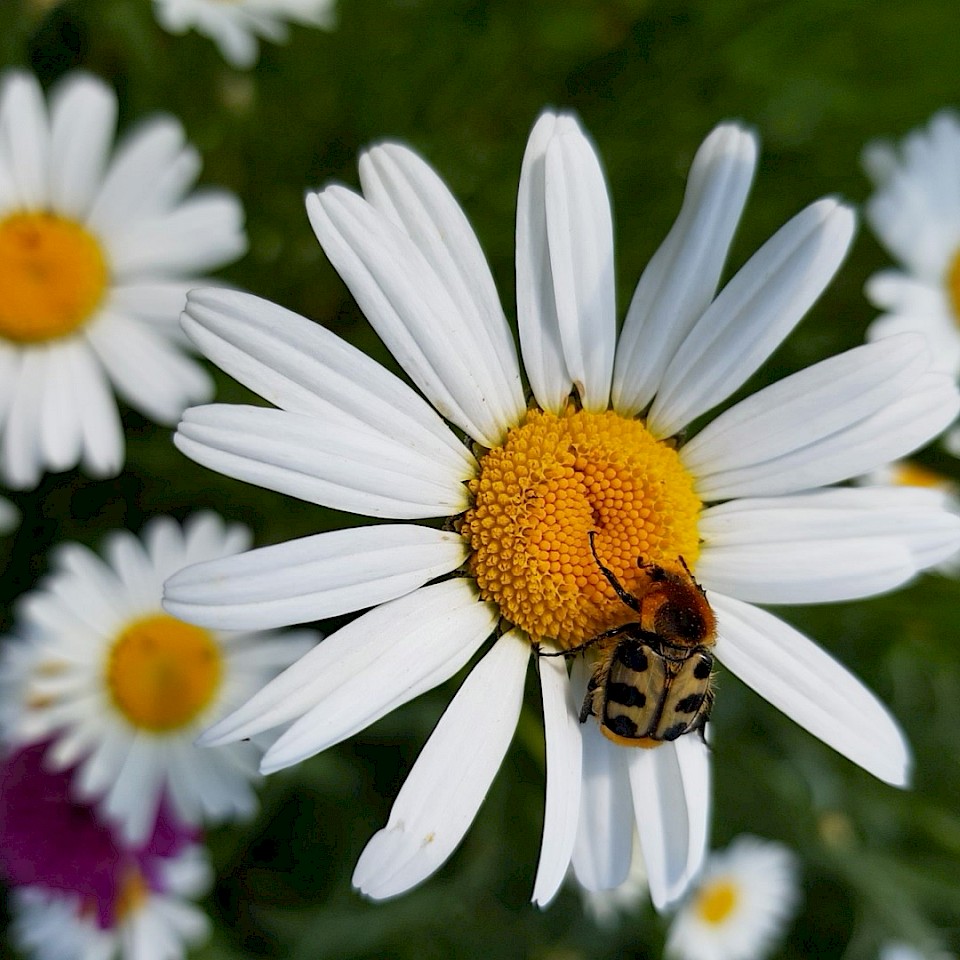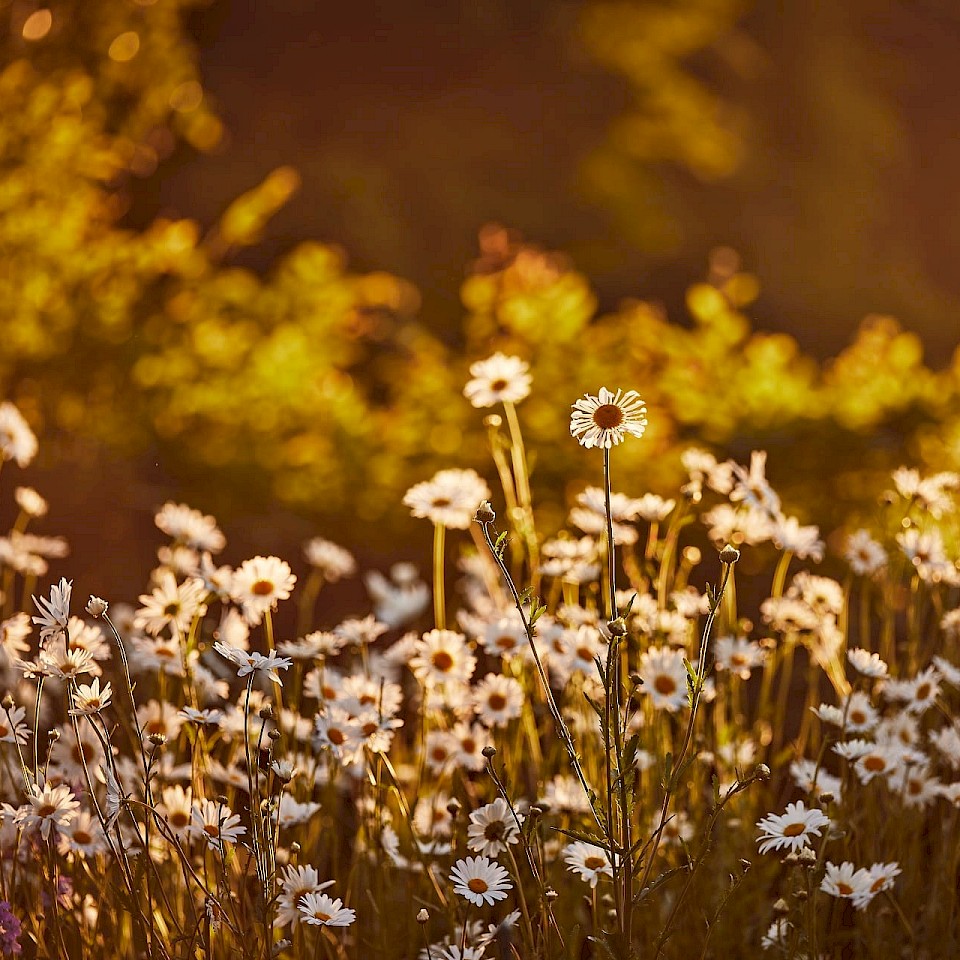
© Shutterstock

© Münsterland e. V.
Climate change, its consequences and how we adapt

© Kemper
With the advancing climate change, the consequences are also becoming more and more noticeable here in Münsterland. But how can one's own house and garden be adapted to increased heat waves, dry phases and heavy rainfall events? We talked about this with Dr Tobias Kemper from the NRW State Office for Nature, Environment and Consumer Protection (former networker for climate impact adaptation).
Lots of green for more species protection: Find out in the video!
Why are climate impact adaptation measures already relevant today?
First of all, strengthening climate protection is enormously important in order to slow down or limit the rise in temperature. In North Rhine-Westphalia alone, this rise has already reached 1.5 degrees since weather records began. However, in order to be able to deal with climate change, we must already adapt to its consequences today. With the Evolving Regions project, the districts of Coesfeld and Steinfurt have already set out to promote climate adaptation in rural areas.
How does climate change affect us?
Climate change is already in full swing and its consequences and effects have long been felt - even in our latitudes. This is shown not least by the last very warm and drier-than-average years. The various heat waves, but also the long dry phases, have an impact on humans and animals as well as on our nature. This is particularly evident in the forests, but also in agriculture. In addition, there have been numerous severe storms in recent years, which have caused corresponding damage with heavy rain, storms and hail. Scientists agree that these so-called extreme weather events will occur more often and be more severe in the future. Tendencies towards this are already clearly recognisable today.
How does climate change affect the Münsterland?
Here, too, an increasing number of heavy rainfall events are to be expected, which occur everywhere in the country and can then lead to corresponding flooding and inundation at the place where they fall. In the region, this was the case in Münster in 2014. Furthermore, heat problems, especially in city centres, as well as increased periods of drought are a problem. It can be assumed that as climate change progresses, extremely dry phases will alternate with extremely wet phases. Both extremes must be dealt with in the best possible way.
What consequences does climate change have for agriculture in the Münsterland and our drinking water supply?
Long dry periods in particular pose a threat to the agricultural structure in the Münsterland region - as the years 2018 and 2019 have shown very clearly. This is particularly problematic in spring, especially as the growing season now begins two weeks earlier on average due to climate change. In addition to agriculture, which has a high demand for water, the availability of drinking water may also become a problem in some regions. In many cases, the drinking water supply is provided by wells connected to groundwater. In unfavourable cases, this can lead to conflicts of use between commercial and private users. It is therefore important to be aware of these potential problems at an early stage and to take appropriate precautions.
Adjusting to climate change: tips for sustainable gardening
The first place to start adapting to climate change is your own garden and house. A lot can be achieved here even with small measures:
Lots of greenery: greenery and planting generally lead to an improvement in the microclimate. This means that the temperature around the building rises less than with grey or dark, sealed surfaces. In addition, a varied green design with flowers and shrubs promotes biodiversity in the garden - because it provides insects with a necessary habitat that is sometimes in short supply.
Ponds: Ponds are also useful, as evaporation has a cooling effect on the surrounding area and thus on one's own garden.
Shade trees or canopies for individual sections to further improve the quality of stay and reduce heat.
No or few sealed surfaces: A garden that is loosened up and has little sealing offers the possibility of collecting rainwater or allowing it to seep away. Times of heavy rainfall can also be buffered in this way and so-called "wild surface water run-off" can be prevented.
Use rain barrels or cisterns: This way, rainwater can be used to water the plants. This reduces water consumption. In addition, it does not have to be fed into the sewage system, which in turn reduces wastewater charges. In some cases, there are municipal subsidy programmes for this.
Why are rock gardens not good for the climate?
Gravel gardens are not only "dead" areas where little to no life is possible. They also unnecessarily heat up the area around the building and prevent the percolation of rainwater. The temperature difference in a rock garden compared to a grassed and shaded garden can be as much as eight degrees in summer! Not a pleasant prospect when you think of a heat wave of 35 degrees and more. In addition, stones store heat longer than green areas. They then release it again at night, thus preventing a restful night's sleep. Therefore, health problems cannot be ruled out.
How do I protect my house from severe weather events and high temperatures?
At best, trees should be planted in such a way that they cannot fall on the house in later storm events and thus cause damage. Precipitation water should be infiltrated or stored, but in any case directed away from the building. The building should always be secured against surface water penetrating from the outside, this is especially true on slopes. Cellar shafts should be secured and it is advisable not to build ground-level entrances. To prevent the building from heating up too much in summer, there are various shading elements.
Tip: The district of Borken has compiled more information on how to protect yourself and your house from heavy rain and floods in clear brochures. The city of Oelde has also published a flyer on this topic.
What are the arguments in favour of a green roof?

The effects of green roofs and also façades are comparable to those of a green garden. On the one hand, they protect against additional heating, and on the other hand, precipitation water can be temporarily stored (especially through green roofs). Through the corresponding evaporation effects, green roofs improve the microclimate and thus also the quality of stay in the residential environment. The greening of roofs, in particular, depends on the load-bearing capacity of the respective parts of the building. Garages and carports in particular are suitable for at least basic greening. The effects of green facades on the heating of the building envelope have also been proven. Those who do not want to green their façade can use light-coloured materials instead. These reflect sunlight and heat up less than dark materials. This is true not only on the façade, but especially in the areas in the garden and around the house that continue to be sealed.
It is the combination of various complementary measures that most effectively improves the living environment in times of climate change. In the meantime, more and more municipalities in Münsterland are offering their citizens subsidies as an incentive for greening roofs, façades or otherwise grey areas. It is worthwhile to check whether your municipality or district has a subsidy in its programme.









